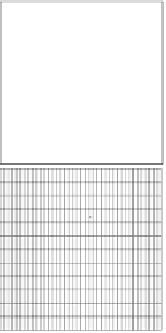Geoscience Reference
In-Depth Information
mas
µ
m
pixels
Fig. 1. Example showing how the incoming signal from an ellipsoidal object is converted
into a recorded Gaia signal. The ideal optical image is randomly sampled (top left)
and then combined with a sampling map of the instrument Point Spread Function,
obtaining the photoelectron distribution on the CCD plate (bottom left, in which the
grid represents the pixels). Finally the number of the photoelectons in each pixels column
is counted obtaining the real 1D signal (right).
According to current ideas, the signals from asteroid sources actually
recorded by Gaia will be sets of six or 12 numbers (depending on apparent
magnitude), corresponding to the numbers of photoelectrons received in
six (12) pixel columns centered around the object's photocenter. The basic
goal is then to be able to develop suitable techniques to discriminate the
properties of these signals with respect to signals coming from point-like
sources of a similar apparent magnitude, as well as to distinguish among
signals from extended objects of different angular sizes. The basic property
of the signals that can be used to perform the above mentioned tasks is
simply the resulting signal width (the
σ
of the photon distribution over
the six, or 12, recorded channels). In other words, if one can derive an
expected angular size versus signal width relation, a simple measurement
of the signal width would be in principle sucient to derive the angular size
of the asteroidal source. The most important effect that has to be taken
into account, in this respect, is photon noise.
Due to photon noise, the angular size versus signal width relation is not
a rigorous one-to-one relation, but it is affected by a random variation due







































































































































































































































































































































































































































































































































































































































































































































































































































































































































































































































































































































































































































































































































































































































































































































































































































































































































































































































































































































































































































































































































































































































































































































































































































































































































































































































































































































































































































































































































































































































































































































































































































































































































































































































































































































































































































































































































































































































































































































































































































































































































































































































































































































































































































































































































































































































































































































































































































































































































































































































































































































































































































































































































































































































































































































































































































































































































































































































































































































































































































































































































































































































































































































































































































































































































































































































































































































































































































































































































































































































































































































































































































































































































































































































































































































































































































































































































































































































































































































































































































































































































































































































































































































































































































































































































































































































































































































































































































































































































































































































































































































































































































































































































































































































































































































































































































































































































































